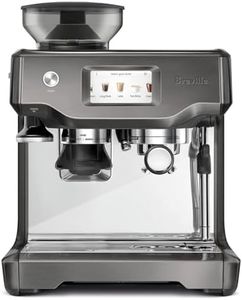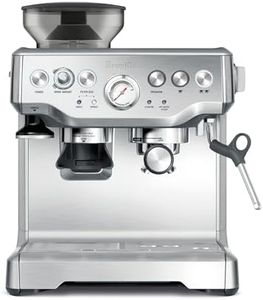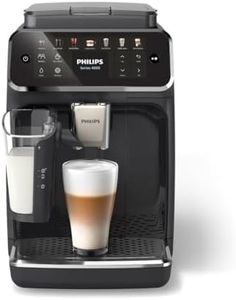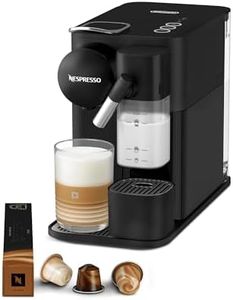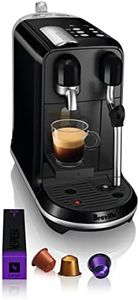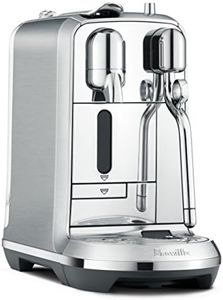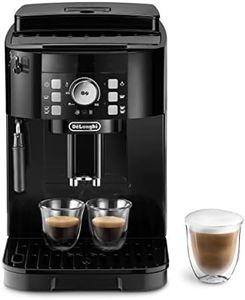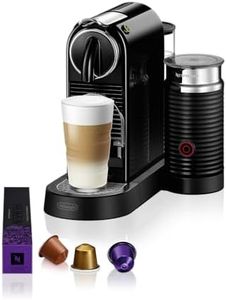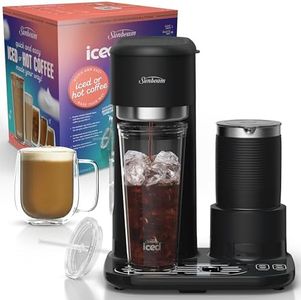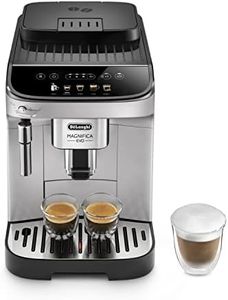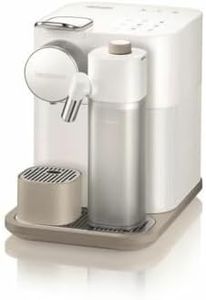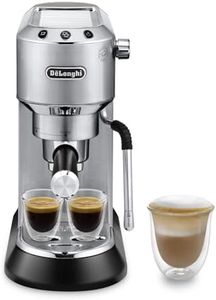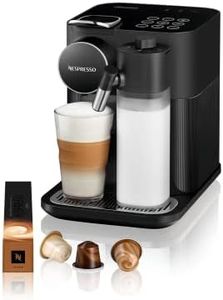We Use CookiesWe use cookies to enhance the security, performance,
functionality and for analytical and promotional activities. By continuing to browse this site you
are agreeing to our privacy policy
10 Best Cappuccino Latte Machine
From leading brands and best sellers available on the web.Buying Guide for the Best Cappuccino Latte Machine
Choosing the right cappuccino or latte machine can make a huge difference in your home coffee experience. The best approach is to start by thinking about how often you’ll use the machine, how much effort you want to put into making your drinks, and what kind of coffee experience you’re after—whether it’s convenience, hands-on barista style, or something in between. Understanding the main features and specs of these machines helps you decide what will fit your needs and lifestyle best.Type of Machine (Manual, Semi-Automatic, Automatic, Super-Automatic)This refers to how much control you have over the brewing process. Manual machines require the most skill and give you the most control, ideal for those who enjoy the process as much as the coffee. Semi-automatic machines automate some steps but still give you involvement, while automatic and super-automatic machines do almost everything for you, which is great for convenience and consistency. If you like experimenting and learning, go manual or semi-automatic. If you want push-button convenience, automatic or super-automatic is your match.
Milk Frothing SystemThis spec is about how milk gets frothed for your cappuccino or latte. Some machines use a steam wand for manual frothing, while others have automatic milk frothers or carafes. Manual wands give you more control, but require some skill and practice. Automatic systems are fast and easy but may offer less texture control. If you prefer hands-off prep or make several beverages at once, look for automatic frothers; if you enjoy customizing your milk texture, seek out manual wands.
Boiler Type (Single, Double, Heat Exchange)The boiler is what heats the water in the machine, key for both espresso extraction and milk steaming. Single boilers mean you can’t brew and steam at the same time, so they’re best for occasional users or those who don’t mind a pause. Double boilers or heat exchange systems allow simultaneous brewing and steaming, making them ideal for frequent users or those who make multiple drinks in quick succession.
Size and CapacityThis includes the size of the water reservoir and how many cups you can make before refilling. Small tanks are fine for individuals who make one or two cups a day, while larger capacities are better for families or hosts. Think about your kitchen space too—larger machines can take up a lot of counter space.
Ease of Cleaning and MaintenanceHow easy the machine is to clean can impact your enjoyment long-term. Features like removable drip trays, descaling indicators, and automatic cleaning programs can make upkeep less of a chore. If you want a low-fuss experience, look for machines that stress easy cleaning in their design.
Pressure (Bar Pressure)This measures the force used to push water through the coffee grounds, which affects flavor extraction. Most machines use 9-15 bars of pressure. Machines in this range can make quality espresso, but keep in mind that higher bars don’t always mean better coffee—consistency matters more. Opt for machines that maintain steady pressure for best results.
Customization and ProgrammabilitySome machines let you adjust brewing temperature, shot volume, and milk foam level, while others offer preset options. If you love experimenting with your drinks or want control over every cup, look for more customizable machines. If simplicity is more important, machines with one-touch programs are likely a better fit.
